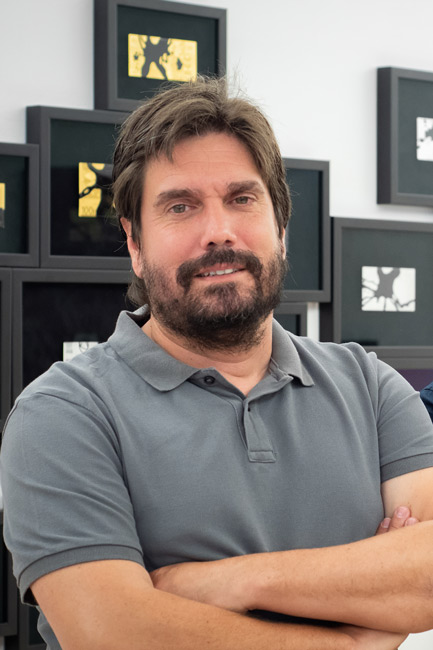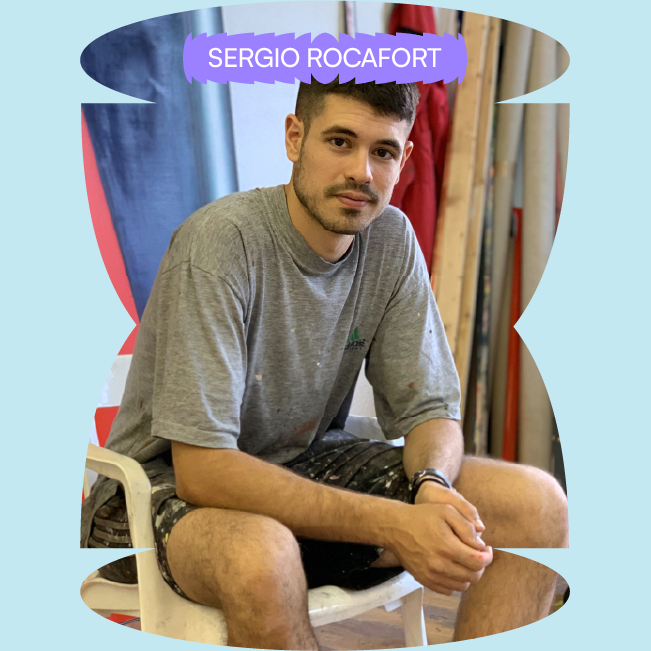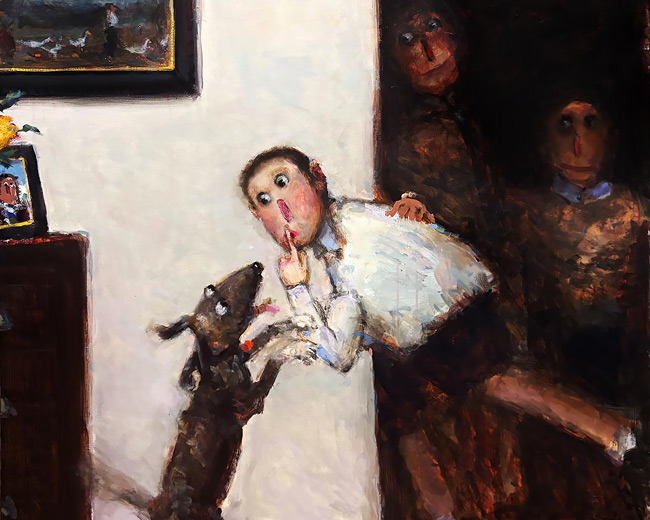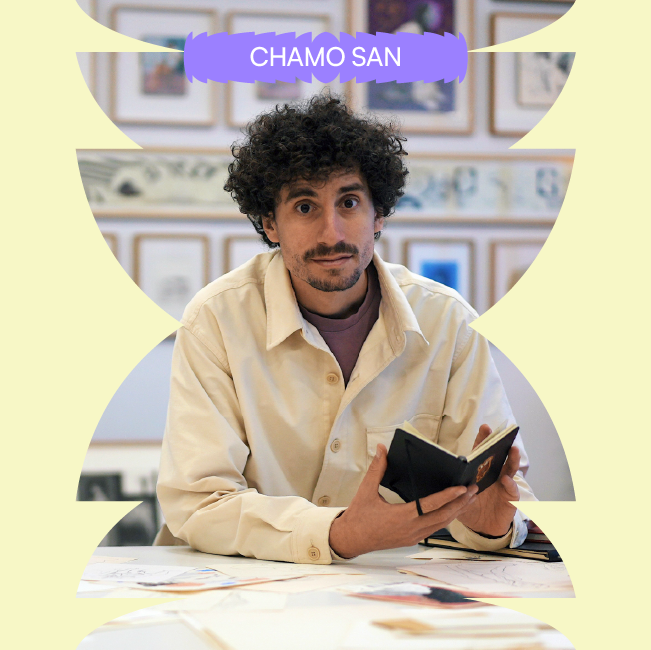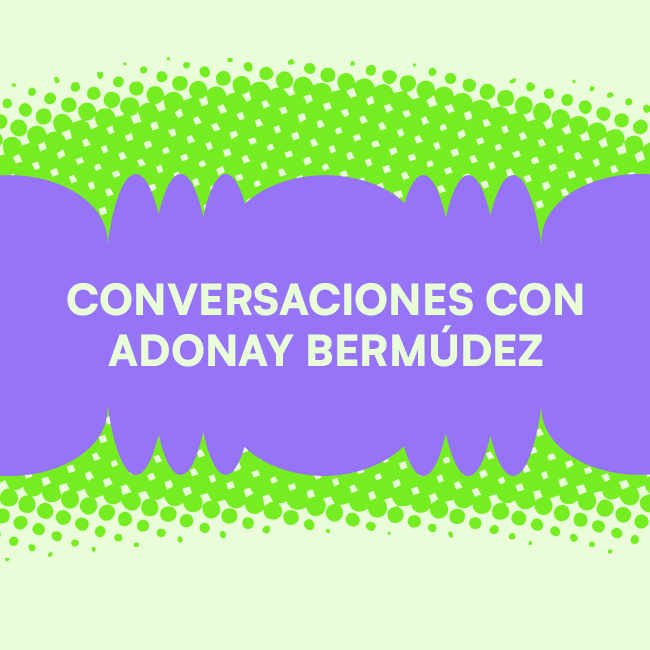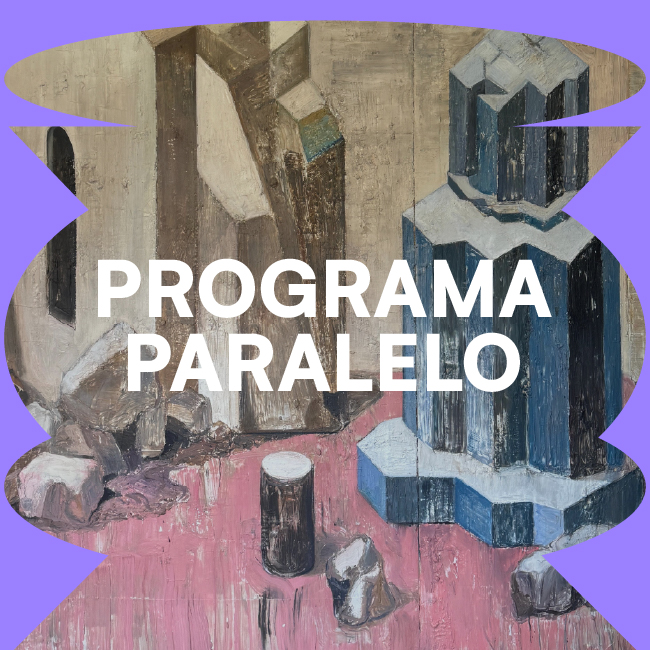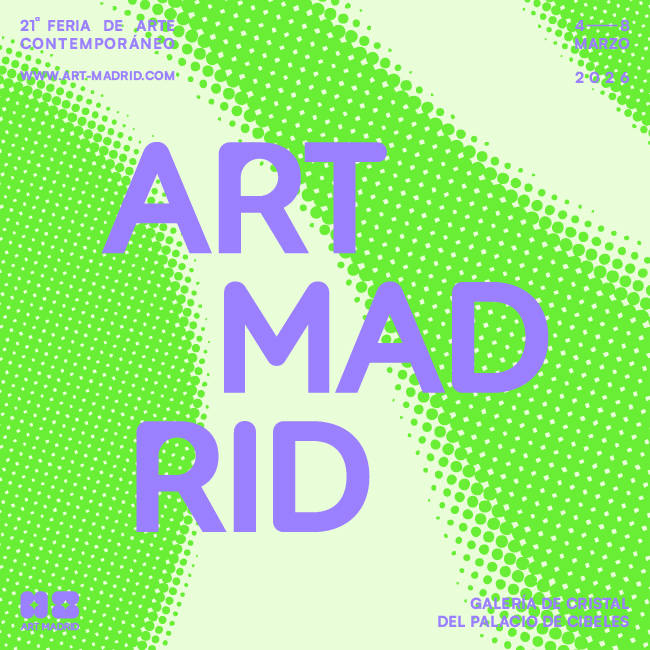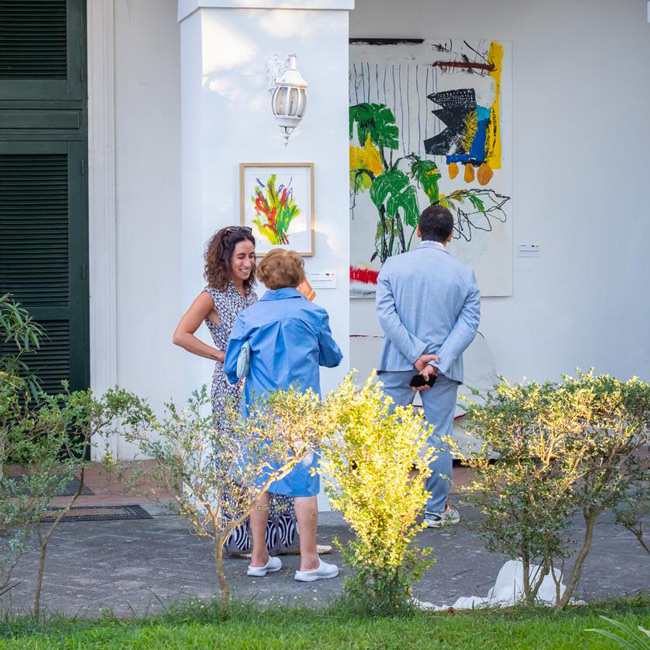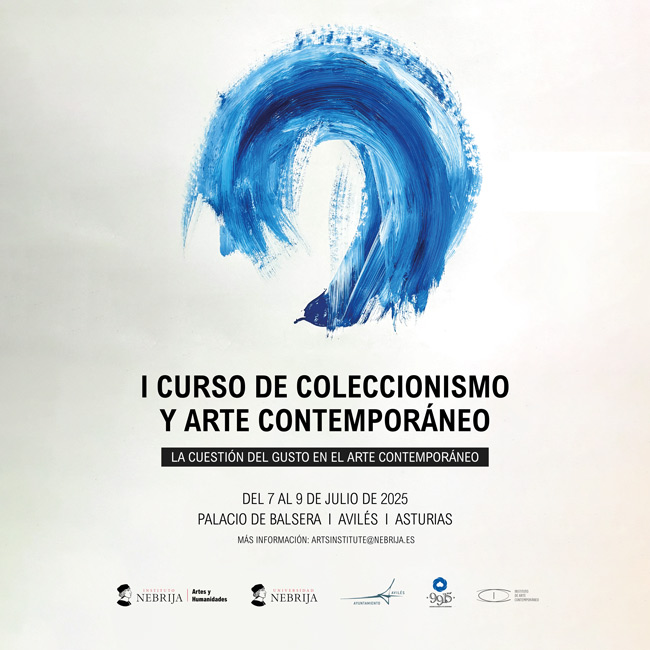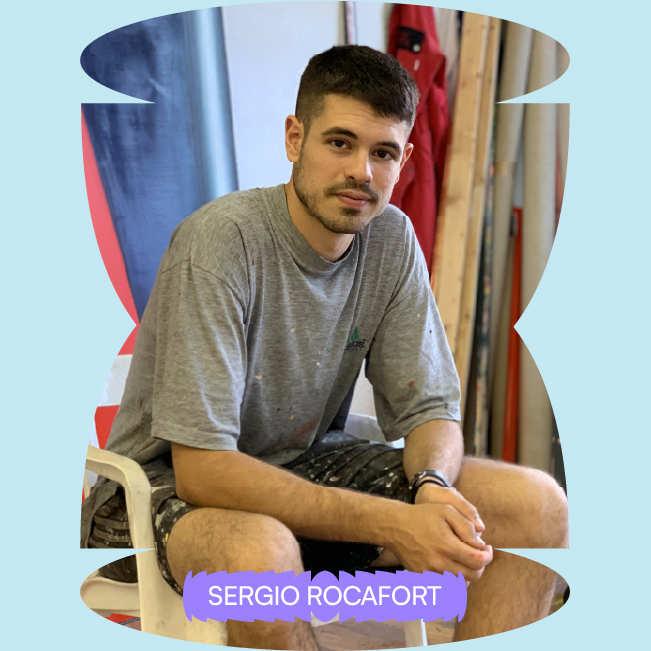INTERVIEW TO FERNANDO GÓMEZ DE LA CUESTA, CURATOR OF ‘ONE PROJECT’
Jan 16, 2020
art madrid
Fernando Gómez de la Cuesta is an art critic at ABC Cultural, an independent exhibition curator, a researcher and a teacher. He has a Degree in Law from the UB and in History of Art from the UIB. Member of the ACCAIB and Territorial President of the IAC. He is critical of ABC Cultural and is part of the publication Ministerio de la Verdad of the Sublime. He has been a resident curator at the Casal Solleric in Palma with different exhibition cycles (2010-3), Director of the PalmaPhoto photography festival (2013-5), he has curated CRIdA (artists' residence of the Palma City Council from 2011 to 2012), the 1st Festival of Contemporary Art of Saltillo (Coahuila, Mexico, 2015) and the Contemporary Art Fair MARTE de Castellón (2018).
He is currently preparing several exhibition projects for the CGAC of Santiago de Compostela, Cabildo de Lanzarote, Centro Párraga de Murcia and La Regenta of Las Palmas. He has curated multiple individuals and collective exhibitions in spaces such as, among others, TEA Tenerife, MUCA Rome of Mexico, Niemeyer Centre of Avilés, Kunst Haus Wien, Pilar and Joan Miró Foundation in Mallorca, Cervantes Institute in Prague, Es Baluard of Palma, Michael Horbach Stiftung of Colonia, Las Cigarreras of Alicante, Hilvaria Studios of Tilburg, Espai Rambleta of Valencia, MUU Helsinki or CEART Fuenlabrada, with the participation of artists such as Carlos Aires, Ana Laura Aláez, Irene de Andrés, Verónica R. Frías, Jorge García, Martín y Sicilia, Rosell Meseguer, Guillermo Mora, Santiago Morilla, PSJM, Avelino Sala, Amparo Sard, José Luís Serzo, Javier Vallhonrat or Simon Zabell, to name a few.
How did you receive this proposal from Art Madrid?
With great enthusiasm. For professionals who work from peripheral locations, in my case from a town in Mallorca called Artà, we find it very difficult to access the programs and projects that are developed in the capital. It is always a pleasure (and a responsibility) to have the opportunity to curate a proposal in Madrid, much more if you do it for a prestigious structure, as consolidated and organised, as is the international contemporary art fair Art Madrid.
How did you tackle this curatorship?
The truth is that since I received the invitation from Alberto Cornejo and his team I have enjoyed absolute freedom and total support to develop the idea I had in mind. Curating a section of a fair is a kind of special curatorship, you should never lose sight of where, how and why one is taking care of the selection and content of a proposal, and a contemporary art fair is a context marked by very powerful limits: one of them is the payroll of galleries that apply and the artists who present themselves; another, that all have as their first objective the sale of work. Starting from these initial conditions, I had a lot of interest in investigating something that has to do with the market as a legitimising institution within the professional developments of the current art world, also about fashions, trends, currents and about those resistant artists who decide to take paths away from them. I wanted to raise awareness about that dichotomy that already occurred between the great official salons and those creators who subverted the state of the matter from their participation in them or generating new alternative devices such as independent or des refusés salons.
What do you think is the role of One Project within Art Madrid?
One Project is a project that precedes me and has a foundational basis and a broad development over time. Both Carlos Delgado Mayordomo and Nerea Ubieto (colleagues who have previously curated this program) have done a great job. One Project must serve the fair to introduce new artists and new galleries, but at any cost, it must fulfil that function, no doubt, but it must do so by establishing a forum for reflection and debate, a place to put the prism on some concrete aspect of contemporary creation to be able to analyze it with a certain depth. One Project is a section that must have that plus of research, of calm, effort and rigour, to try to give another type of depth and visibility to the work of artists and gallery projects within a fair of art.
How do you expect the public will live the format used in this idea of debate-conflict?
The title of the proposal, “Salvajes. La cage aux fauves”, already puts us on the track. Our idea, apparently contradictory, is to generate that friction based on a peculiar symbiosis, in which we have counted on artists who walk the path of creation through a path that is autonomous, personal and, sometimes, in conflict with the usual, with the recurrent, with the trend, with fashion... Artists who paint and sculpt with effort as a form of resistance and who do so in an epidermal, superfluous and vertiginous era, where hardly anyone pays attention to anything. Artists who believe from expressiveness, impulse or iconoclasm, from a passionate and vehement, visceral, desacralising or irreverent perspective. We hope that the public lives it with the same interest and the same intensity we aimed when building this story. For this, we have counted on Virginia Rivas, Roberto López, Julio Anaya Cabanding, Pichiavo, Santiago Palenzuela, Juan Carlos Batista, Andrés Planas, Alona Harpaz and Nicolàs Laìz Placeres, who are represented by DDR Art Gallery, Plastic Murs, Kaplan Projects, MA arte contemporary and the Agency of Cultural Transits.
What role do you think fairs play in the Spanish art market and how would you frame Art Madrid?
This and other fairs fulfil a fundamental mission when activating the sector. I believe in the fair as a dynamic agent and as a node of that network of activity that is deployed throughout the national territory, and I believe in its importance for the creation of new collectors. In my opinion, collecting, the private initiative in general, is one of the keys that can make a sector like ours become a professional economic fabric where the participating agents can live from their work, preventing it from remaining this circus of juggling games where they stay in an almost permanent precariousness. For that, basic education, a lot of pedagogy and a lot of intermediation are needed. We must increase the affection and sensitivity towards culture in general, and towards contemporary art in particular. Art Madrid undertakes this mission in a brave way, with an evolution that consolidates edition after edition. The permanence and growth of its complementary programs, where One Project is framed, demonstrates this.
And what do you think is the place of contemporary Spanish art within the international artistic paradigm?
Unfortunately, far from where the quality of the agents that compose it should place it. We suffer from a main problem that affects basic structures and acts as an obstacle very difficult to overcome. In many cases, we still do not charge decent fees for our work, without respecting our elementary rights, our creations and authorship, from this preliminary situation it is difficult to project an international professional career, in addition, the market and private investment are very restricted. The institutional sphere that, as in other contexts, should be our fundamental support, is still marked by political interference. In Spain, there is an excessive dependence on the public realm in what refers, above all, to contemporary art and that makes us have some political interlocutors completely unaware of what we do. These people manage the spaces and budgets that we use since precariousness but, in reality, they have motivations that are far from ours. Contemporary creation moves in terms and interests very different from those of the political pace. We need long-term plans and professional criteria to decide and develop them, while the ruling class still wants to control the contents of cultural institutions so that they become spokespersons for the ideology of the party in power. Meanwhile, we, the palace jesters, endow them with “controlled cultural offer”: they see us as necessary (and needy) programmers who go through (almost) all the hoops because of that hardship situation. A situation imposed by the rulers that manage to dissociate us as a sector, causing us to accept works that do not comply with the deontology that, in social networks and other forums, we all defend (but that we do not always apply).
We know that the cultural sector maintains its almost inherent precariousness even though we are experiencing an extraordinary period of artistic hatching. Artists reinvent themselves and strive to continue creating. Do you think there has also been an evolution in public perception when approaching contemporary art? What can art fairs do in this approach to the general public?
The processes in contemporary creation always have to do with the society that welcomes them and the changes it experiences. The public (but also the artists), while having access to more media and information, appear overwhelmed by this same excess. We all have a concentration defect, it is harder for us to pay attention, time, effort, depth, especially when our role is that of the public. As we have said before, there is only one solution, an answer that, after so much repetition, is becoming harmless, empty of content: we need education, establish pedagogies and intermediations that generate a critical and cultured mass, that makes us evolve towards a society interested in current creation.
The work of a curator is primarily to generate discourse and content around creation to raise issues open to society. Many contemporary artists have reoriented their lines of work towards more reflective projects where the discourse has a priority charge in the work. How is this tension channelled between the reflexive impulse of contemporary creation and the pressing lack of time and the super information that the individual lives in the society of our time?
That situation can be a stimulus. Artists are intellectuals sensitive to everything around them. However, in most cases, this lack of time, basically the result of our professional precariousness, and that over information, ends up being more a problem than a means or motivation. There are many artistic careers that are buried under this precariousness of excess.
What do you think are the common lines that young artists are developing in the process of growth?
The truth is that there are multiple differentiated lines of research, many of them very stimulating. In line with the last questions of our conversation, I can tell you that I am interested, among other topics, in those artists who are referring to their own work, to the creator's own professional performance, to their economic, social and work situation, to the consideration of themselves and their work. A self-reference that is becoming a very accurate, tragic, ironic expression of the situation of culture in general and of the visual arts in particular. On this, I am preparing a project entitled “The sterile works” that will be presented next year at La Regenta of Las Palmas de Gran Canaria with the participation of artists such as Verónica Ruth Frías, Cristina Garrido, Cyro García, Núria Güell, Nauzet Mayor, Adrián Martínez, Eugenio Merino, Rosell Meseguer, PSJM, Avelino Sala, Amparo Sard, Pelayo Varela and Marcelo Viquez.
